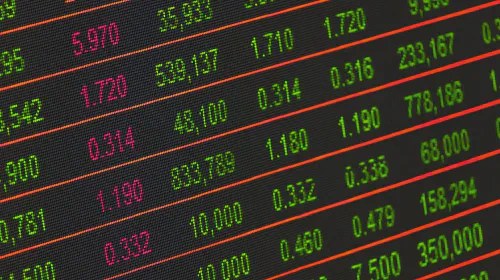How to Burn an NFT and Why are NFTs Burned?
Salomon Kisters
Jun 6, 2023This post may contain affiliate links. If you use these links to buy something we may earn a commission. Thanks!
In the world of cryptocurrency, non-fungible tokens have taken center stage and have become an incredibly lucrative endeavor. NFTs are unique digital assets that can exist as anything from music to artwork, collectibles, and much more. They are recorded on the blockchain, making them easily verifiable and immutable. But if you ever found yourself in a situation where you had to get rid of these priceless items, what would you do? You have the option to “burn” the NFT.
Burning an NFT is the act of permanently destroying the token. As counterintuitive as it might seem to get rid of something useful that holds value, there are multiple reasons why people might make this decision. This article will examine why one might choose to burn an NFT and the proper way to go about it.
What is an NFT?
The rise of non-fungible tokens or NFTs is a testament to the non-stop innovation in the crypto landscape. NFTs are digital assets verified on the blockchain, which are unique and cannot be interchanged. They can be any object but are mostly created in the form of images, art, music, videos, or different items in blockchain-based video games.
NFTs have shown particular dominance in art, and tokens are sold for millions of dollars at auction houses. Many artists see this as an opportunity to monetize their work and make decent profits. In the field of music too, artists can compose music and sell it directly to their fans in the form of record labels without any intervention from dealers or other intermediaries.
Every NFT comes with its digital signature, which makes it unique. NFTs are inimitable digital assets with a limited supply differentiating them from other digital assets that have an infinite supply. This is also in contrast to physical money or other fungible cryptocurrencies, meaning they can be exchanged or traded with other forms of value.
NFTs were catapulted into the limelight in 2017 with the release of CryptoKitties, a decentralized application (DApp) that allows users to purchase, sell, and collect virtual cats. These fascinating digital assets have captivated the interest of traders and creative individuals throughout the world, with the NFT market growing by 299% in 2020 to more than $250 million. Another indicator of the surging popularity of NFTs is the growth seen in the number of NFT wallets on which NFT transactions take place.
How Do NFTs Work?
NFT is different from ERC-20 tokens such as DAI or LINK because every token is distinct and cannot be divided. NFT ownership of digital commodities can be traced to the Ethereum blockchain as a public ledger that records all the transactions on the network. The recorded data makes it easy to transfer tokens to different owners and verify ownership.
NFTs are owned by one individual or entity at a single point in time. The specific ID and metadata that any other token cannot replicate are used to handle the NFT ownership. Smart contracts are used to assign ownership of the object and manage the transfer of NFTs. The smart contract is also used to create the specific metadata, and when an NFT is generated, users execute the smart contract code following standards such as ERC-721. This data is also stored on the blockchain.
NFTs can be bought and sold just like traditional physical assets, therefore, their value is determined by the market forces of supply and demand. NFTs can also represent real-world objects such as artwork and real estate besides exclusively digital assets. Some users believe that tokenizing real-world tangible items in this way will make purchasing, selling, and trading them more efficient and reduce the probability of fraud or the intervention of intermediaries.
NFT Burning
Cryptocurrency burning refers to a deflationary process that involves sending tokens or digital currency to a wallet that cannot be accessed, hence, making them irretrievable and removing them from circulation permanently. Deleting NFTs the same way is not possible because of the inherent nature of the blockchain. Burning cryptocurrency tokens, per se, does not literally destroy them; the process only renders them inoperative in the future.
However, you can burn a digital asset by sending it to a unique burn address. As no one has access to the burn address, any asset sent will be taken out of circulation even though the NFT will still exist on the blockchain. Due to the specific null address, sometimes known as the ‘eater’ address, burning NFTs is far more significant as these assets cannot be recreated and replaced.
How to Burn NFTs
Burning NFTs involves very few steps, making it simple and easy to understand the whole process. The techniques for burning NFTS vary slightly from one platform to the next.
Ethereum
On the Ethereum blockchain, the easiest way to burn NFTs is to do it through the OpenSea marketplace. On the OpenSea platform, you will navigate the item list to find the NFT you want to burn. You will then hit the transfer button on the top right corner of the tab and enter the OpenSea burn address, which is 0x000000000000000000000000000000000000dEaD.
After entering the correct address, you will select the transfer button and confirm your transaction with your wallet. You must also pay the necessary gas fee to complete the transaction.
Polygon
The steps to burn an NFT on Polygon are almost identical to the Ethereum blockchain. There is a minor difference, though. After you have selected the desired NFT on the Polygon platform, you will enter a different burn address instead. The burn address for the Polygon blockchain is 0x0000000000000000000000000000000000000000, and once it has been entered, you can hit the transfer button and complete the transaction as usual.
Solana
The Phantom Wallet is one of the most popular crypto wallets used with the Solana blockchain, which has a built-in burn feature. Once you select the undesired NFT, you will hit the dots at the top of the page and click on ‘burn token’. This will lead you to the confirmation page, where you should double-check if you have selected the correct asset.
Once you know your choice (this cannot be undone, so make sure you have selected the right asset), click the red ‘burn’ button to complete the process.
Why are NFTs Burned?
As burning NFTs is akin to setting cash on fire, it may not be easy to understand why someone would send these tokens to a burn address on purpose. Although NFTs are occasionally burned by mistake, there are a few reasons why some individuals would intentionally get rid of their valuable commodities. For example, some NFT artists may buy and destroy several virtual artworks to add scarcity and exclusivity to their collections.
Some Web3 artists are experimenting with built-in burning capabilities to increase the functionality of their NFTs. Artist Jack Butcher, for example, included a burning mechanism into his Checks VV NFTs. The more Checks VV NFTs a person could get their hands on, the more times they may be burned to make these NFTs rarer. Again, the burning process contributes to the scarcity and the perceptions of rarity associated with NFT collections.
In this context, “NFT burn events” can serve as public relations campaigns to raise attention for and promote Web3 initiatives. For example, the “We Are All Going to Die” collection made headlines in June 2022 when it sent the rare Mutant Ape #20438 to a burn address. As predicted, the announcement of this high-profile NFT burning drew greater attention to the NFT project and increased its value due to the greater demand and popularity.
Some collectors also burn NFTs to remove “crypto clutter” from their wallets. Active NFT collectors sometimes receive random and useless NFT airdrops in their wallets from unknown addresses. Given the prevalence of scams in the NFT arena, it makes sense for these individuals to be more vigilant and delete these spamming NFTs. While not all airdrops are malicious, deleting suspicious NFTs from unidentified sources is prudent to avoid any trouble.
Some NFT projects have a specific utility or use case requiring tokens’ destruction. For example, a game might need players to burn NFTs to unlock new levels or features. This directly links the tokens and the game’s values, making the token in question more valuable. In other cases, NFT burning can be used to correct mistakes made while creating an NFT. For example, if an artist accidentally created two identical NFTs, one can be burned to ensure that only one unique token is in circulation.
Final thoughts
NFT burning is the intentional destruction of a non-fungible token. This can be achieved in multiple ways, with some variations depending on the blockchain and NFT platform used. While destroying a valuable digital asset might seem counterintuitive, the process is essential to the health of the larger NFT ecosystem.
NFT burning creates scarcity, encourages buyer interest, and can provide unique utility or use cases for NFTs. As the NFT market continues to grow and evolve, we expect more creative uses for NFT burning.
Stay informed with the latest insights in Crypto, Blockchain, and Cyber-Security! Subscribe to our newsletter now to receive exclusive updates, expert analyses, and current developments directly to your inbox. Don't miss the opportunity to expand your knowledge and stay up-to-date.
Love what you're reading? Subscribe for top stories in Crypto, Blockchain, and Cyber-Security. Stay informed with exclusive updates.
Please note that the Content may have been generated with the Help of AI. The editorial content of OriginStamp AG does not constitute a recommendation for investment or purchase advice. In principle, an investment can also lead to a total loss. Therefore, please seek advice before making an investment decision.

Impact of Non-Fungible Tokens (NFTs) on the Economy - Insights and Analysis
Learn about the impact of Non-Fungible Tokens (NFTs) on the economy, from creating new funding opportunities to revolutionizing industries and investments.

Are Nfts Good or Bad for Artists and Musicians?
NFTs have generated much hype over the last couple of years. But are they good or bad for artists and musicians?

The Top 4 Ways Nfts Will Change the World
The NFT market has grown more than 20 times in the last year. Here are the top 4 ways NFTs will change the world.
Protect your documents
Your gateway to unforgeable data. Imprint the authenticity of your information with our blockchain timestamp